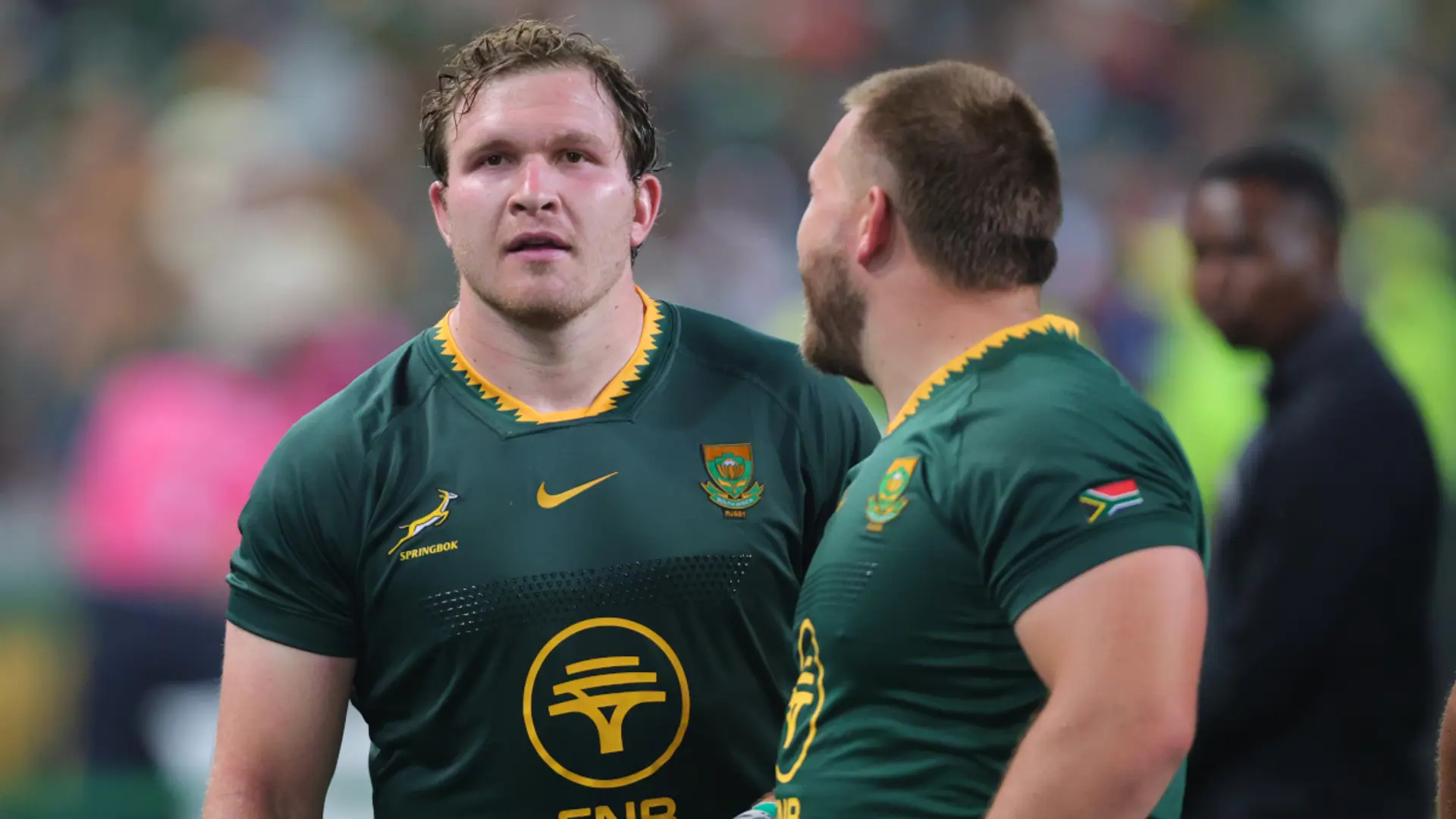Damage from Wessels hearing will hurt rugby for years to come

The dust may be settled, and the verdict may be final, but there are still several questions swirling around the disciplinary process of the Vodacom United Rugby Championship that convicted Springbok utility forward Jan-Hendrik Wessels of foul play.
The eight week ban will stand and Wessels has no other option within the URC to appeal after his appeal was dismissed on Wednesday night. The only recourse still available to him is to take the matter to the Council for Arbitration in Sport if he feels aggrieved.
But the can of worms that the disciplinary process has opened could come back to haunt the league for a long time to come and while the Bulls tried everything in their power to put the best case forward for Wessels, there were some discrepancies that still need to be explained, and which may well make up a case if Wessels decides to take it further.
NEW MEDICAL EVIDENCE ENTERED AND IGNORED
The Bulls legal team particularly felt aggrieved at the fact that the most weight in the case was given to the testimony and report of Citing Commissioner Peter Ferguson, which had discrepancies that were simply accepted by the first disciplinary panel and again by the appeal panel.
Even in the appeal on Wednesday night, the committee dismissed the “De Novo” request - or do over - for a new trial given the discrepancies and found there “were not exceptional circumstances to allow the request.”
The Bulls also entered new medical evidence - including a Urologist report which disputed Murphy’s version of a 3-5 second grab and twist of the genitals, a human movement specialist report and a ruck specialist that backed up Wessels version that his leg was trapped and he was trying to move out, but all this was rejected by the panel.
The panel did not see any reason that the original panel “erred” in their decision and in effect agreed with Ferguson’s version of events, placing undue weight on the Citing Commissioner’s report.
CONVICTED PLAYER FOR THE UNSEEN, EXONERATED PLAYER FOR SEEN FOUL PLAY
The result is that, in effect, the same disciplinary panel has convicted a player for something unseen and for which there is no video evidence, bar an accusation from an opposing player, but exonerated the second player for a clear red-card offence that was seen and captured on video.
This alone reverses the hierarchy of proof — a textbook case of irrationality under administrative-law standards. Not only that, World Rugby’s Regulation 18 and its Judicial Officer Handbook impose three non-negotiable duties on disciplinary panels:
- Consistency of sanctioning. Comparable acts must yield comparable outcomes.
- Fair and impartial application of evidence. The same evidentiary thresholds apply to both sides.
- Protection against bias. Decisions must be (and be seen to be) independent of nationality, club, or emotional context.
Fans can make up their own minds if this applies to this case.
Both panels relied on the “eyewitness” testimony of Ferguson, who works for the Irish Rugby Union as a citing commissioner. Ferguson claimed he had direct line of contact of the incident, from about 20 metres away.
The Bulls pointed out that the nearest stand is currently closed for the public, and therefore couldn’t have been 20 metres away as claimed, but is more likely to have been 50 metres away on the other side of the field.
ONLY ONE SIDE WAS IN REPORT
Ferguson then also wrote his report after speaking to the accuser Josh Murphy, who had just been sent off for punching Wessels in the back of the head, getting himself a 20-minute red card.
The fact that Ferguson did not seek out Wessels’ version of events is questionable in itself, and seems to have based his entire report on just Murphy’s version of events.
Ferguson’s report gave the impression he saw something the referee, two assistant referees, a television match official and countless replays couldn’t see.
“I was present at the match, positioned approximately 20 metres from the incident. My direct line of sight corroborated the sequence of events as described by Murphy and partially captured on video,” he said in his report.
The way the disciplinary process works, meant that the report was taken on “the balance of probabilities” and therefore Wessels had to prove the citing commissioner was wrong to be exonerated.
NOT ALLOWED TO CROSS-EXAMINE
The Bulls weren’t allowed to cross-examine Murphy or Ferguson, and the committee chose to give weight to Murphy’s testimony because Wessels’ oral evidence was “brief” in comparison to Murphy’s, which was deemed “clear and detailed by the Committee.”
The fact that Murphy had two previous red cards and a poor disciplinary record, and had reason not to receive a third ban, which would have been lengthy, was “considered but notwithstanding this the Committee found his evidence to be credible.”
Wessels, for now, will have to sit out the eight games as per the sanction, unless he takes it further. Even that will take time, but is perhaps worth it if he feels aggrieved.
And now that he has been branded a dirty player, if he is ever in a disciplinary hearing again he will be treated as a player with a poor disciplinary record, who will receive larger sanctions if found guilty.
The whole exercise leaves a bad taste in the mouth and leaves so many questions unanswered. The URC has said both hearings’ reports will be released “for review” but has said the matter is closed, so nothing further will happen either way.
The precedent that has been set, and the long-term damage that awaits rugby as a result will reverberate for years to come.
Advertisement

